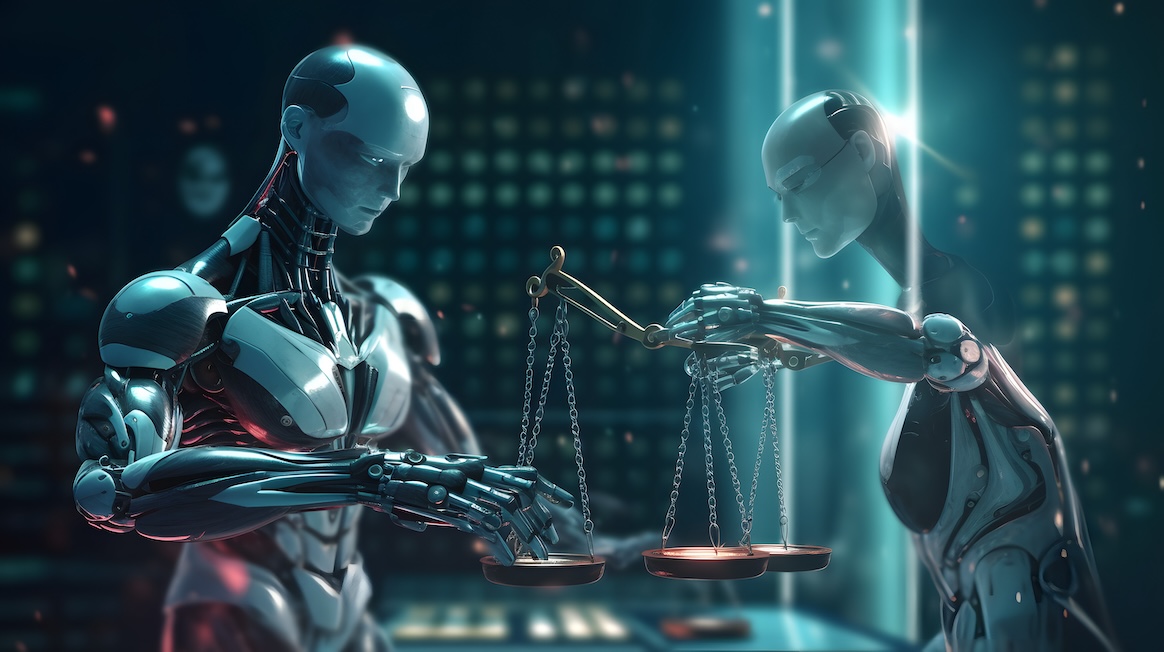What Is Data Drift in Machine Learning?
Data drift is a phenomenon where the statistical properties of target variables, which a machine learning (ML) model is trying to predict, change over time in unanticipated ways. This drift can lead to a reduction in model accuracy. The main cause of data drift is the dynamic nature of data, which can evolve over time due to changing trends, behaviors, and other factors.
Data drift is a common issue faced by many machine learning models, especially those processing data that is live or regularly updated. The fundamental assumption in machine learning is that the training and test data follow the same distribution and characteristics. However, in practical applications, this assumption is often violated due to reasons like changes in user behavior, economic conditions, and changes in data processing, all of which can significantly change the data distribution.
Understanding and monitoring data drift is crucial for maintaining the performance of ML models over time. It allows data scientists to update their models when needed and avoid potential pitfalls that may arise due to changes in the underlying data. When a model is constantly monitored, it is possible to adapt it to data drift, ensuring it stays accurate and relevant over time.
This is part of a series of articles about model training.
In this article:
Why Is Identifying Data Drift Important?
Identifying data drift is a crucial component of maintaining the performance and accuracy of machine learning models. If left unchecked, data drift can result in significantly reduced model performance, leading to inaccurate predictions and unreliable results. This is especially problematic in industries or applications where accurate predictions are vital, such as healthcare, finance, and autonomous vehicles.
Early detection of data drift allows for timely intervention and model updates, ensuring that the model continues to deliver accurate predictions. By continuously monitoring data for signs of drift, data scientists can identify changes in data distribution early on and take steps to retrain or fine-tune their models.
Furthermore, identifying data drift can also provide valuable insights into changes in the underlying phenomena that the data represents. For instance, a detected drift in consumer behavior data could indicate shifting consumer trends or preferences. These insights can be very valuable for businesses and organizations, enabling them to adapt their strategies to changing circumstances and stay ahead of the competition.
Data Drift vs. Concept Drift vs. Model Drift
While data drift refers to changes in the distribution of input data over time, concept drift and model drift are somewhat different phenomena that are also important to understand when dealing with machine learning models.
Concept drift refers to changes in the relationship between the input data and the output variable that the model is trying to predict. In other words, even if the input data's distribution remains the same, the way it relates to the output can change over time, leading to a decrease in model performance. This type of drift is often more challenging to detect and handle than data drift.
Model drift refers to changes in the model's performance over time, regardless of the underlying cause. Model drift can occur due to data drift, concept drift, or due to other factors related to the way the model was trained, set up, or deployed to production. When monitoring for model drift, the focus is on identifying deterioration in model performance, and then tracing back to find the underlying cause.
Data Drift Detection Process
Here are the general steps involved in data drift detection. It’s important to carry out this process once at the beginning of the model’s operations, before data drift has occurred, and then at a later point in time. This will provide a baseline to allow comparison.
While it is possible to carry out these steps on your own, it might be difficult to do consistently over time, especially if you manage multiple ML models. Automated machine learning monitoring tools like Kolena can automate the process.
1. Data Retrieval
The first step in detecting data drift is data retrieval. This involves collecting data that the machine learning model uses for predictions. This data may come from various sources and may be of different types, such as numerical, categorical, or textual data. The key here is to ensure that the data is up-to-date and accurately represents the phenomenon that the model is trying to predict.
2. Data Modeling
After retrieving the relevant data, the next step is to model the data. This involves using various statistical and machine learning techniques to understand the data's underlying structure and distribution. This step is critical as it provides the basis for detecting any changes or drift in the data over time.
3. Calculating Metrics
Once the data is modeled, the next step is to calculate test statistics. These are numerical values that summarize the data and can be used to detect changes in the data's distribution. There are various types of test statistics, such as mean, variance, skewness, and kurtosis, each of which provides different insights into the data's properties.
A different approach to metric calculation, one which Kolena uses, focuses on model performance. With this approach, If suddenly this month's ML model F1 score regresses by 10% for no explainable reason, it’s an indicator of potential data drift.
4. Hypothesis Test
The final step in the data drift detection framework is the hypothesis test. This is a statistical test used to determine whether the observed changes in the test statistics are significant or just due to random chance. If the test concludes that the changes are significant, this indicates that data drift has occurred, and the model may need to be updated or retrained.
Key Metrics for Identifying Data Drift
Here are some of the metrics commonly used when attempting to identify data drift.
Summary Statistics
Summary statistics, such as mean, median, mode, and standard deviation, provide a high-level overview of the data. They can be a quick and easy way to detect potential data drift. For instance, if the mean of a particular feature in your dataset shifts significantly from one time period to another, it could be a clear indication of data drift.
You might also observe changes in the distribution of categorical variables or a drastic increase in missing values. However, while summary statistics are a great starting point, they might not always capture the full picture, making it essential to use other methods to detect data drift.
Statistical Tests
Statistical tests are a more robust way to identify data drift. Tests such as the Kolmogorov-Smirnov test or Chi-square test can help assess whether the distribution of your data has changed significantly over time.
These tests compare the distribution of your data at two different time points and return a p-value. If this p-value is below a certain threshold (usually 0.05), it means the difference in distributions is statistically significant, indicating data drift. While these tests are more reliable than summary statistics, they can be computationally expensive, especially when dealing with large datasets.
Distance Metrics
Another common method for detecting data drift is the use of distance metrics. These metrics, such as the Kullback-Leibler Divergence or the Jensen-Shannon divergence, measure the distance between two probability distributions. The greater the distance, the more likely it is that data drift has occurred. These metrics can be particularly useful when dealing with high-dimensional data, where visual inspection is not feasible. However, like statistical tests, distance metrics can also be computationally intensive.
Rule-Based Checks
Rule-based checks involve defining certain rules based on domain knowledge, and then checking if these rules are violated in the new data. For example, if a data set represents temperatures in a certain region, there could be a rule stating that the temperature should always be between -40 and 50 degrees. If you start seeing values outside this range, it could be an indication of data drift. Rule-based checks can be very effective but require a good understanding of the data and the problem domain.
5 Ways to Mitigate Data Drift
1. Schedule Periodic Retraining of the Model with New Data
One of the most straightforward ways to handle data drift is to regularly retrain your model with new data. This ensures that your model is always up to date with the most recent patterns in the data. However, the frequency of retraining should be carefully chosen. Retraining too often can lead to overfitting, while retraining too infrequently can cause the model to be outdated.
2. Analyze the Features Contributing to Drift
When you detect data drift, it can be helpful to analyze which features are contributing the most to the drift. This can be done by computing feature importance scores or by using techniques like partial dependence plots. Once you identify the drifting features, you might be able to modify them in a way that makes them more stable over time.
3. Data Augmentation
Data augmentation is another useful technique for handling data drift. By creating synthetic data that mimics the drift, you can train the model to be more robust to such changes. This can be particularly useful when dealing with rare events, where the amount of available data is limited. However, care must be taken to ensure that the synthetic data is representative of the real-world drift.
4. Implement Models that are Inherently More Adaptive
Some models are inherently more adaptable to changes in data than others. For instance, online learning algorithms, which update the model parameters incrementally as new data comes in, can be a good choice when dealing with data drift. Similarly, ensemble models, which combine the predictions of multiple base models, can provide a more robust prediction in the face of data drift.
5. Continuous Monitoring and Alerting
Continuous monitoring is crucial for detecting and handling data drift. By regularly checking the performance metrics of our model and the statistics of our data, you can detect drift as soon as it occurs. Setting up automated alerts can also be very helpful, allowing you to react quickly when drift is detected, and avoid deterioration in performance which can erode trust among model users.
Automating Data Drift Detection and Mitigation with Kolena
Kolena makes robust and systematic ML testing easy and accessible for any organization. With Kolena, machine learning engineers and data scientists can uncover hidden machine learning model behaviors, easily identify gaps in the test data coverage, and truly learn where and why a model is underperforming, all in minutes not weeks. Kolena’s AI / ML model testing and validation solution helps developers build safe, reliable, and fair systems by allowing companies to instantly stitch together razor-sharp test cases from their data sets, enabling them to scrutinize AI/ML models in the precise scenarios those models will be unleashed upon the real world. The Kolena platform transforms the current nature of AI development from experimental into an engineering discipline that can be trusted and automated.
Among its many capabilities, Kolena also helps with feature importance evaluation, and allows auto-tagging features. It can also display the distribution of various features in your datasets.
Data Drift: How Kolena Can Help
Kolena stratifies data by time on top of various scenarios. Simply set up data ingestion by day or by hour, and see how your model performance metrics change across different models and different scenarios over time. You'll know when performance suddenly drops, and precisely why it dropped.
Reach out to us to learn how the Kolena platform can help build a culture of AI quality for your team.














